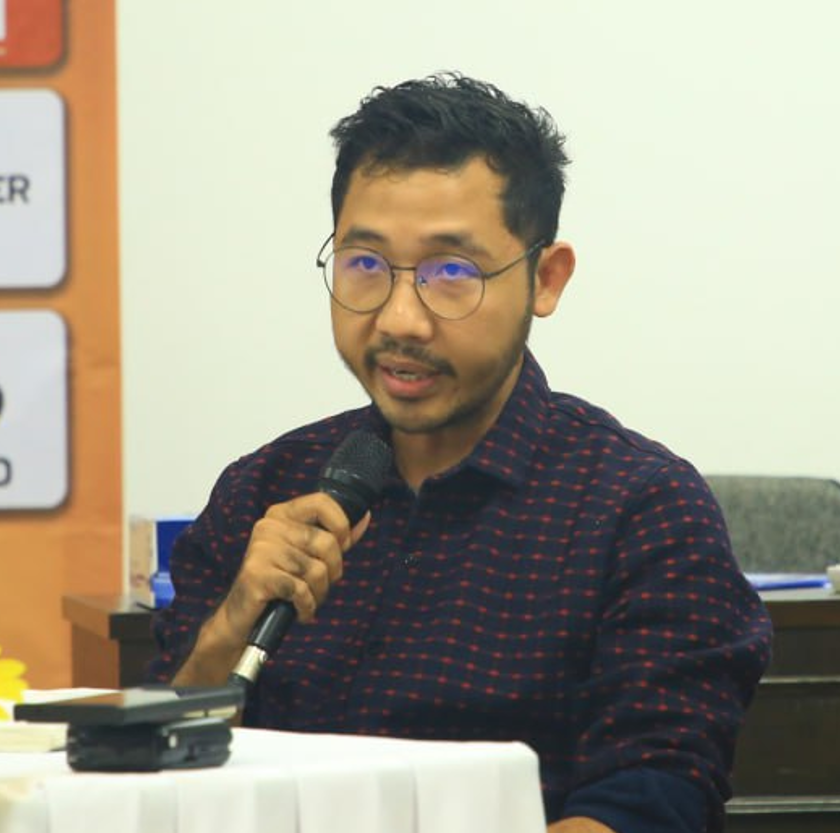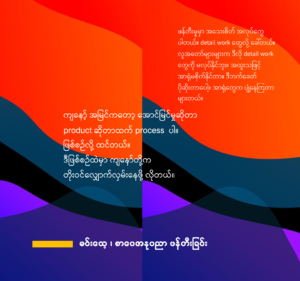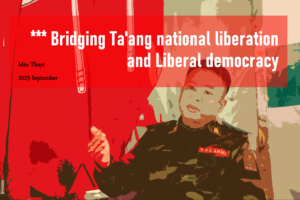Min Thayt
September 2023
Myanmar has gone from a place of sporadic civil war to a state of continuous civil war. The root cause of the civil war was the consequence of the problem of equality and defiance of military authoritarian rule. As the role of the Myanmar’s Army (Tatmadaw) expanded due to the civil war, The army’s monopoly of political power has prolonged the civil war. The 2021 military coup led to the militarization of Myanmar as a whole. The role of armed struggle has expanded to the point where the militant minded have entered and dominated the civilian youth.
Myanmar’s civil war has been so widespread for more than 70 years since independence. It can be seen only sporadic civil war and guerrilla civil war. However, there are signs that the ongoing civil war will drag on for years. This is because there is only an arms race, and the other side cannot expect a clear victory in the war. Throughout the civil war, it can see only arms race, and the overall outcome of the war as a whole was not clear cut. As a result, nearly a few hundred-armed organizations were born in Myanmar, the third poorest country in the world. According to ISP-Myanmar’s analysis, as of April 2023, there are about 2.6 million civil war refugees in Myanmar. The size of the country and the number of refugees is overwhelming.
The National Unity Government (NUG), which is fighting with armed means to defeat the military dictatorship in Myanmar, needs weapons support. NUG want to get such weapons support from the Western (democratic) countries. But it is not easy to get help from the West. Therefore, pro-NUG groups organized Spring Revolution fundraising that can be used to buy weapons to fight against the military dictator. The revolutionary funds are donated by the people of Burma both domestically and internationally. “While the NUG would clearly love more state sponsorship and support, whether lethal assistance or non lethal assistance, from Western countries, it’s just not in the cards right now, and so they’ve really had to be self-reliant,” said Zachary Abuza, a professor at Washington’s National War College who has studied Southeast Asian insurgencies for 30 years.(Zsombor Peter, VOA, 2023 July) In the latest report released by Tom Andrews, the UN’s special envoy for human rights in Myanmar, it is said that the value of the military equipment purchased by the Myanmar military after the coup d’état is worth one billion dollars. (BBC Burmese, June 5, 2023)
The people of Myanmar are showing signs that they will continue to suffer the hardships caused by the civil war. Taxes are being collected from the people of central Burma region to help arm the baby EROs emerging from the region. This is aimed at their survival and the success of their revolutionary work.
On the other hand, the Myanmar’s army (SAC) has a lot of military spending needs. The SAC has proposed spending of 5,600 billion Kyat (approximately USD 2.7 billion) for the upcoming year, which is 2,000 billion Kyat more than the previous year’s spending. This increase in military spending could be attributed to the ongoing conflicts across the country. (ISP-Myanmar, No.13 Insight, 2023 April 28) Due to the consequences of the military coup, the availability of foreign currency has become chaotic. In addition, general political instability has pushed up inflation too much. The consequence of all this is that become burdened more and more by the day on the people. The people have become victims of the Myanmar’s army (SAC) need for foreign currency being met indirectly. On the other hand, the aggregate value of labour forces of people flows indirectly in the arms supply sector to achieve the armed revolution. The effect of militarization in many parts of the country will be generally crippling.
The size of Myanmar’s civil war is gradually getting bigger. In addition, the age of the civil war has increased. But there is no hope to die. Due to the prolongation of civil war, wars have become like the business sphere. Armed organizations have become like commercial companies. Military leaders have become businessmen. Military issues have become like business issues. The success of an armed revolution is directly proportional to the ability to collect financial wealth.
Armed conflicts in Myanmar are related to interests. This interest is not the public interest but refers to personal interests or self-interests and group interests. There are three main reasons for the unequal distribution of wealth in Myanmar. These are khaki capitalism [mean military business corporation], ceasefire capitalism and crony capitalism. These three major interest groups are expanding their interests with the prolongation of the civil war. Under the umbrella of armed trade or armed conflict, power, authority and self-interest, the people of Myanmar will continue to be seen as victims of the large gap between rich and poor.
Author:

Min Thayt is a political critic writer and is currently studying for a Master of Public Policy and Global Affairs at the University of British Columbia, Canada. His research area is Burmese socio-political culture and Myanmar Democratization. He has written many socio-political commentary articles and currently has 14 published books.


